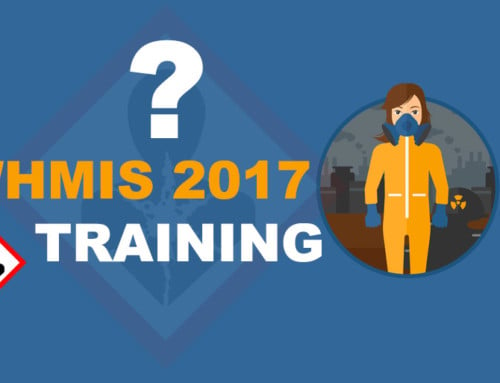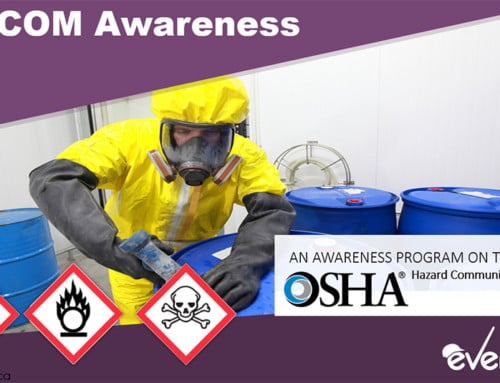OSHA 2016: What Every Employer Needs to Know
OSHA is among the many things that may potentially affect your company this year.
We usually see them introduce new enforcements and regulations, and this time will most likely be no different. With president Obama’s time in office about to end, we are probably wondering whether OSHA will keep up the aggressive regulation enforcements and penalties or whether they will give in to the pressure from Congress. Either way, it will be interesting to see which path the agency takes.
Enforcement
We can’t call all their enforcement initiatives new for 2016, but they are expected to continue issuing citations and doctrines under the multi-employer worksite and the General duty Clause. OSHA can also be expected to put focus on temporary employee training and protection, their initiatives on illness, and on employers who have their workers exposed to the risk of heat-related illnesses. Employers should be familiar with the information covered under Personal Protective Equipment (PPE) standards and Powered Industrial Truck standards.
Penalties
Penalties were increased by the current president himself and are expected to be fully active by August 2016. First is a ‘catch-up adjustment’ based on the consumer price index (CPI) between October 1990 and October 2015. The CPI has shot up from 133.500 in 1990 to 237.838 in 2015. Just to approximate, the catch-up adjustment will be roughly 78.16%. We will now be looking at new maximum penalties of about $7,000 to $126,000 from serious to repeat violations.
After this, we can then perhaps expect OSHA to increase the annual costs of living by mid-January every year. These increases will be based on the percentage increases in the CPI.
They can then choose to follow up with an adjustment that is less than the maximum. This is only if they perceive that the adjustments would impact the economy negatively or if they are given the go-ahead by the Management and Budget office. This is, however, a long shot since Dr. David Michaels who is the Asst. Secretary for Occupational Safety and Health had long stated that an increase in penalties is inevitable.
An Increase in The Use of The General Duty Clause
The occupational safety and health act puts employee safety in the hands of the employer. OSHA has seriously enforced this clause and use it to hold employers accountable when alleged hazards are identified, despite the fact that they have no standards that address workplace hazards. Some include:
- Excessive exposure to extreme temperatures
- Falls
- Exposure to chemicals
- Ergonomics
To stay safe, employers should step up training and efforts relating to these policies. This will ensure smooth flow of work without disruptions from OSHA.
A Reduction on the Reliance of Permissible Exposure Limits
OSHA has initiated this and it will no doubt affect a huge number of employers. Instead of coming up with their own rules and permissible exposure limits (PELs), they are using NIOSH and ACGIH standards to further implement the General clause. Employees will be further protected from exposures and the penalties on employers will be raised. This will most certainly be a good way for OSHA to increase their revenue this year.
The Multi-Employer Worksite Doctrine
Employers need to beware of the fact that they can be prosecuted by OSHA even when they are not directly involved in a violation. This is especially because, in many industries, there is usually the presence of multiple employers. Take for example a construction site which has a creating, correcting, controlling, and exposing employer. The company who is responsible for exposure will be brought to book by OSHA even if the employees he exposed were not theirs.
Globally Harmonized System and Standards
Employers must be well informed on compliance with chemical regulations. They need to keep record of their old MSDS’ so that:
- They can prove compliance with the old Hazcom regulation
- They can use them for defense against compensation claims when need arises
- They are also quite useful when the employer is caught up in a toxic exposure claim
Being updated on practices and regulations that would protect employees against chemical hazards is the best way forward for employers. Employers should:
- Update the new SDS’s when required
- Ensure that the manufacturers and suppliers provide their SDS’s
- Carry out evaluations to check for potential hazards
- Train employees on how to read and understand SDS’s
Temporary Employees
OSHA is aware of the fact that, since temp employees may not spend a lot of time with a company, they may prone to being neglected or given less than adequate training by some employers. OSHA will pay particular attention to temp workers, and employers wishing to avoid citations must provide the same information, instruction, and training to these workers as they would to their own full-time employees. Any worker who may be exposed to hazards within their workplace needs adequate training, regardless of the duration that they’ll be working for your organization.
Changes in Record-Keeping
This is another rule that threatens to expose employers badly to the public. Instead of waiting for OSHA to request for records, employers will be required to submit them regularly. If anything is amiss, it would prompt an investigation from OSHA. Note that this information will also be available to the public, and due to the little information on the context of injuries in the records, it could ruin an employer’s reputation.
The New Silica Rules
The new Silica rules are expected to be released by January 2017. OSHA has since prioritized their enforcement against silica exposure. With a huge percentage of Americans being exposed to silica particles either from work or products that they consume, OSHA has proposed a rule that will ensure that there will be reduced exposure to the lung causing agent.
There are additional rules that are expected to be aggressively enforced by OSHA in 2016. For instance, there is a criminal enforcement agenda that will see to it that employers who violate regulations may face imprisonment and penalties of up to $500,000.
Every employer has a duty to stay in the know and be prepared for midnight regulations. Although they are not a must, agencies have been known to make last minute adjustments and regulations that have adverse effects later on. Therefore, to be safe, just be on the lookout for changes that may significantly affect the way you run your organization.
In conclusion, employers are urged to constantly stay updated with OSHA’s rules and regulations, even with the many adjustments. The fact that there will be an exchange of power with one president handing over to another, there will be a lot to keep up with. We have tried to simplify and breakdown OSHA’s rules and regulations for easier understanding, but you can read more in this article published by Environmental & Safety Law Update: http://www.environmentalsafetyupdate.com/osha-compliance/what-to-expect-from-osha-in-2016-and-beyond/






